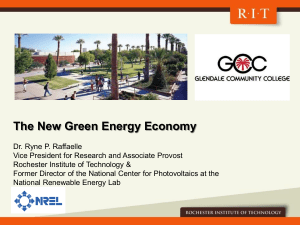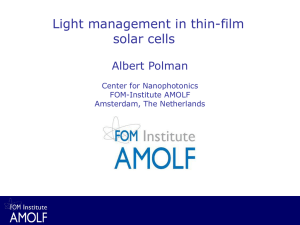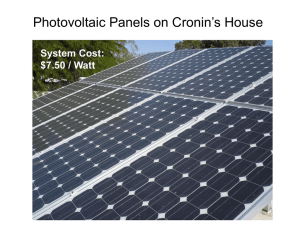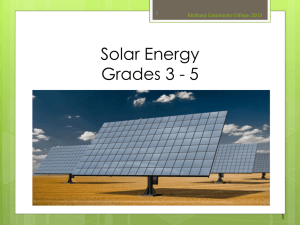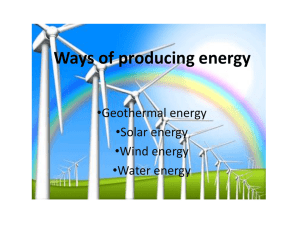2_blank_Polymer Solar Cell
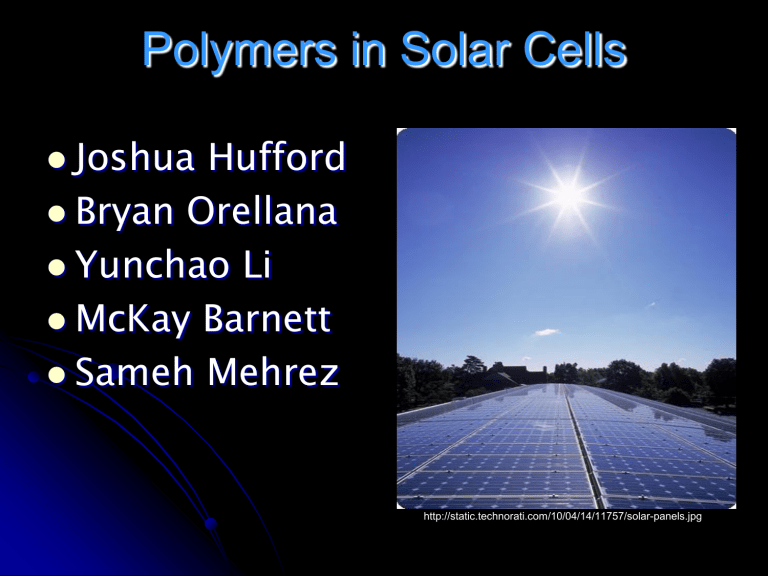
Polymers in Solar Cells
Joshua Hufford
Bryan Orellana
Yunchao Li
McKay Barnett
Sameh Mehrez http://static.technorati.com/10/04/14/11757/solar-panels.jpg
Polymer Solar Cells
First Generation
Single crystal silicon wafers
Third Generation
Nanocrystal solar cells
Polymer solar cells
Second Generation
Polycrystalline silicon
Amorphous silicon
Fourth Generation
Hybrid - inorganic crystals within a polymer matrix
Single Crystal Silicon Wafer http://www.goldmine-elec-products.com/images/G2243B.jpg
Polycrystalline Silicon http://en.wikipedia.org/wiki/Solar_cell
State-of-the-Art!
Use of polymers (i.e. PPV – Polyphenylene
Vinylenes) with nanoparticles mixed together to make a single multispectrum layer
Inorganic hybrids that are used as the nano particles:
CdSe
Titania (Titanium oxide)
This new form creates a more effective transport for charges
State-of-the-Art!
Significant advances in hybrid solar cells have followed the development of elongated nanocrystal rodes and branched nano crystals
Increase surface area
Decreases resistance
Incorporation of larger nanostructures into polymers require optimization of blend morphology using solvent mixtures
Mayer, A.
This makes it easy to potentially make large rolls of thin, flexible polymer solar cells
Where can you find Solar Cells?
Solar cells have many market opportunities
sustainable, reliable, and an economical source of power
Solar cells in space:
The international space station; four sets of arrays, each one has 250,000 solar cells that can power a small neighborhood.
Image taken from www.space.com
Solar power plants in the Mojave
Desert
9 plants provides more power than what
Saudi Arabia produces from oil every day
Cleaner, and more sustainable compared to oil.
Where can you find Solar Cells?
The first solar powered airplane
Flew for 26 continuous hours.
It was powered by 12,000 solar cells on its carbon fiber wings.
Powered solar vehicles
Residential roof solar panels.
Roadmap: Where are polymer solar cells going?
Converting some of the heat for an overall solar cell composite
More efficient and cheaper
Based on polymer solar cell and heterojunction technology
Roadmap: Where are polymer solar cells going?
Future advances will rely on new nanocrystals, such as titania, to replace fullerene derivatives.
Potential to enhance light absorption and further improve charge transport.
Increase efficiency while getting away from all organic solar cell polymers.
Conclusion
New innovations in polymeric materials and other nanoparticles are allowing for cheaper solar cells
Continued research will lead to more efficient cells
Cost effective, sustainable, ease of production, long lasting are key traits that make this technology increasingly plausible as a green replacement from present energy resources.
References:
https://scifinder.cas.org/scifinder/view/scifinder/s cifinderExplore.jsf
http://en.wikipedia.org/wiki/Solar_cell
Mayer, A., S. Scully, B. Hardin, M. Rowell, and M.
Mcgehee. "Polymer-based Solar Cells." Materials
Today 10.11 (2007): 28-33. Print.




